Food packaging plays a crucial role in preserving freshness, ensuring safety, and extending the shelf life of products. The choice of packaging material depends on various factors, including the type of food, storage conditions, and transportation requirements. Here’s a comprehensive look at the different types of packaging materials used in the food industry.
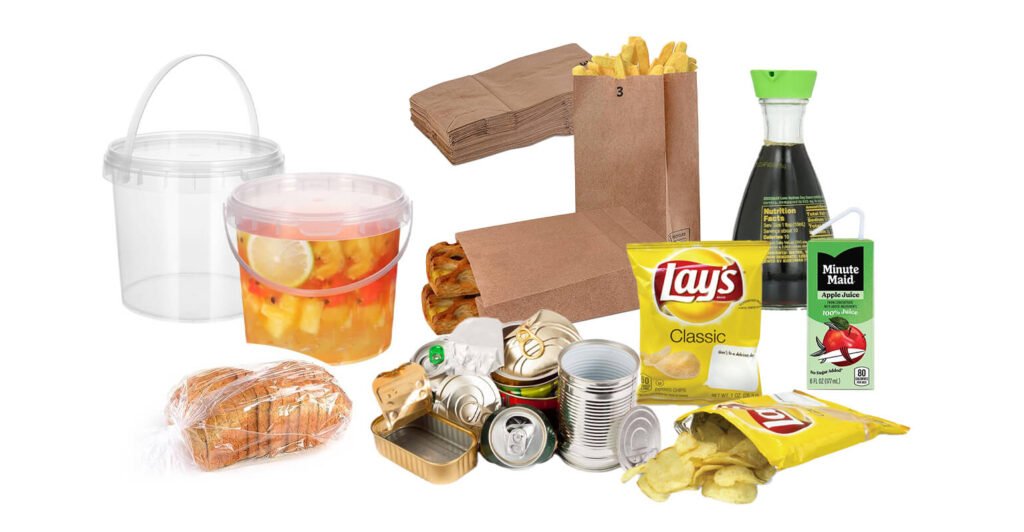
Plastic Packaging
Plastic remains one of the most widely used materials in food packaging due to its versatility, durability, and cost-effectiveness. Different types of plastics serve various purposes:
Polyethylene Terephthalate (PET) is commonly used for beverage bottles and food containers. It’s lightweight, transparent, and offers excellent barrier properties against moisture and gases.
High-Density Polyethylene (HDPE) is ideal for milk jugs, juice bottles, and cereal box liners. It’s resistant to chemicals and provides good moisture protection. HDPE buckets have become increasingly popular for household-size and bulk storage applications. These sturdy, opaque buckets are perfect for storing and transporting items that require long-term storage, such as cooking oils, flour, grains, pickles, and other pantry staples. Their durability and excellent barrier properties make them a practical choice for both home use and commercial applications where products need to be stockpiled or stored for extended periods.
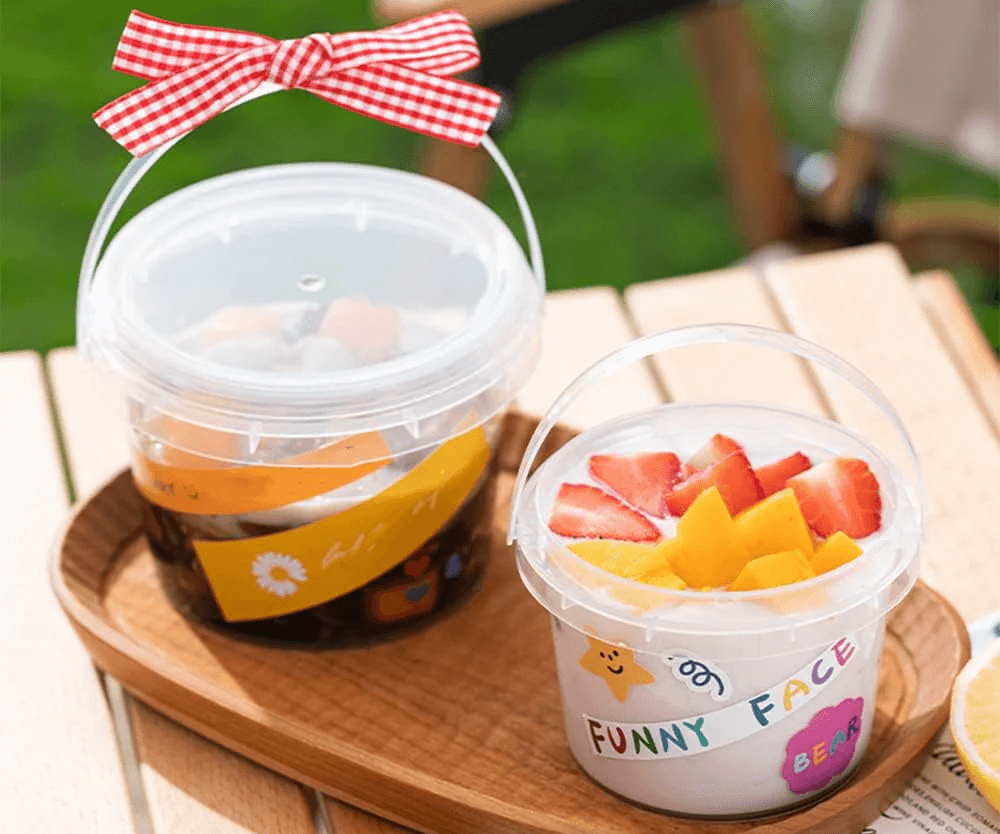
Polypropylene (PP) is heat-resistant and often used for containers that need to withstand hot liquids or microwave heating, such as yogurt cups and takeout containers. PP is also widely used to manufacture transparent plastic buckets, which are particularly suitable for ready-to-eat food packaging. The clarity of PP buckets allows consumers and retailers to easily see the product inside, making them ideal for items like prepared salads, deli foods, fresh-cut fruits, and other immediate consumption products. These transparent buckets are popular in supermarkets, delis, and food service establishments where product visibility is important for merchandising and quality inspection.
Glass Packaging
Glass has been used for food packaging for centuries and remains popular for several reasons. It’s completely inert, meaning it doesn’t react with food contents or leach chemicals. Glass is impermeable to gases and liquids, making it excellent for preserving flavor and freshness. It’s commonly used for beverages, sauces, jams, baby food, and premium products. While heavier and more fragile than other options, glass is 100% recyclable and can be reused indefinitely without loss of quality.
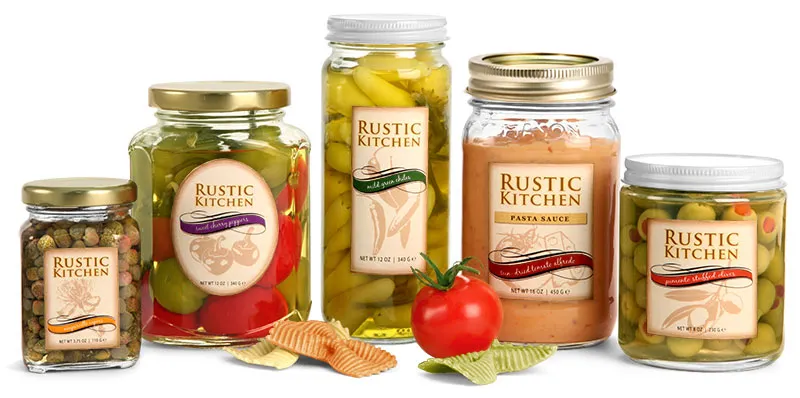
Metal Packaging
Metal containers, primarily aluminum and steel, are staples in food packaging. Aluminum is lightweight, corrosion-resistant, and offers excellent barrier properties. It’s widely used for beverage cans, foil wraps, and food trays. Aluminum cans are particularly popular for carbonated drinks due to their ability to withstand internal pressure.
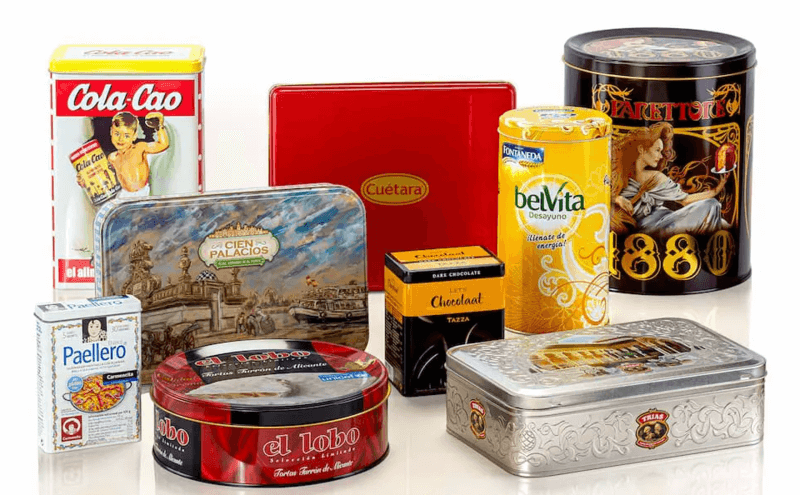
Paper and Cardboard
Paper-based materials are eco-friendly options that are gaining popularity. Cardboard boxes are used for dry goods like cereals, crackers, pasta, and frozen foods. They’re often lined with plastic or wax coatings to provide moisture resistance.
Paper bags are common for bread, flour, sugar, and takeout food. Paperboard cartons are used for milk, juice, and other beverages, typically featuring multiple layers, including plastic or aluminum for barrier protection. Paper packaging is biodegradable, recyclable, and made from renewable resources, making it an increasingly preferred choice for environmentally conscious brands.
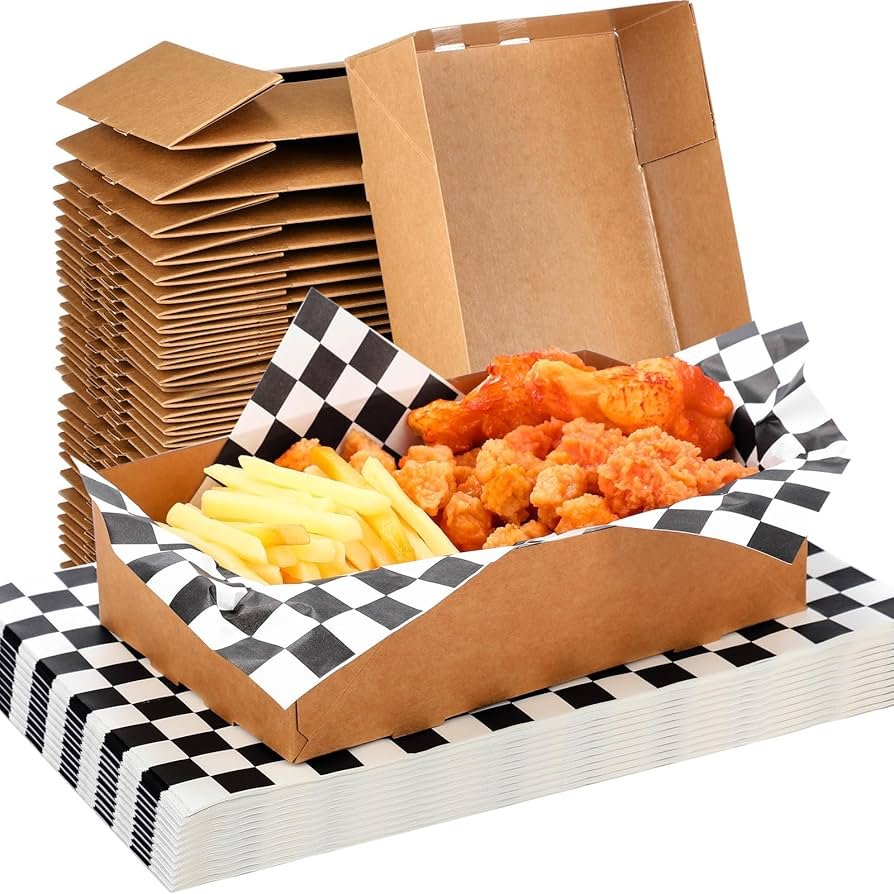
Wood and Bamboo
Traditional wooden crates and boxes are still used for transporting fresh produce, particularly fruits and vegetables. Wood allows for air circulation, which is beneficial for certain foods. Bamboo containers are emerging as sustainable alternatives for food storage and serving, particularly in the takeout and food service industries.
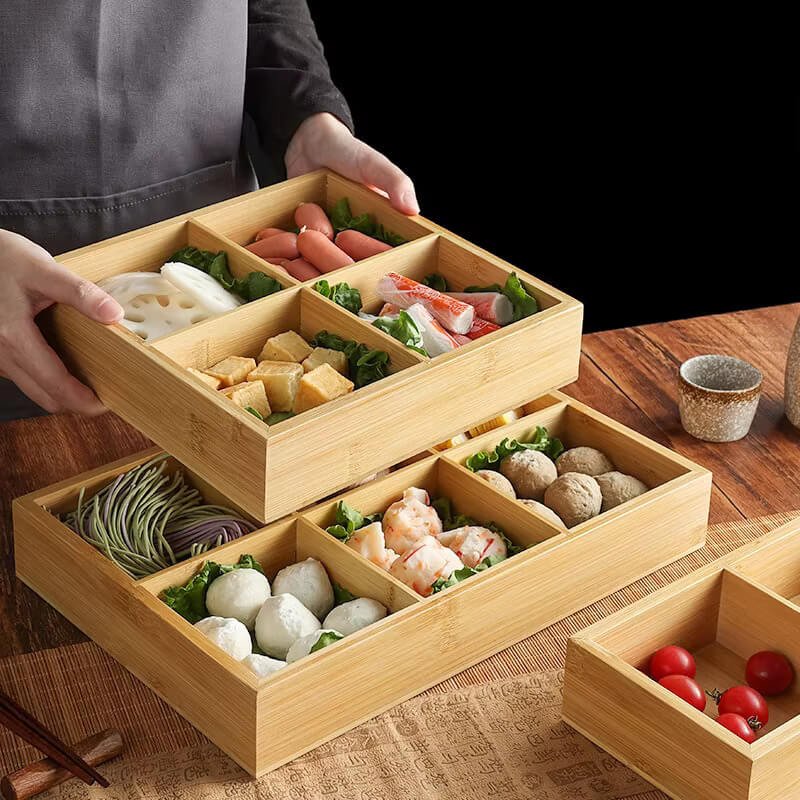
Biodegradable and Compostable Materials
The growing environmental awareness has led to innovative packaging solutions. Plant-based plastics derived from corn starch, sugarcane, or cellulose offer similar properties to conventional plastics but are biodegradable. Edible packaging made from seaweed, rice, or other food-grade materials is an emerging technology that could revolutionize the industry. These materials appeal to eco-conscious consumers and help reduce packaging waste.
Flexible Packaging
Flexible packaging includes pouches, bags, and wraps made from various materials or combinations thereof. Multi-layer films combine different materials (plastic, aluminum, paper) to create packaging with specific barrier properties. These are used for snacks, coffee, pet food, and frozen foods. Flexible packaging is lightweight, space-efficient, and often uses less material than rigid alternatives.
Choosing the Right Material
The selection of packaging material depends on multiple factors: the nature of the food product, required shelf life, storage conditions, transportation needs, regulatory requirements, cost considerations, and environmental impact. Many modern food packages use multi-material combinations to leverage the benefits of different materials while minimizing their drawbacks.
Conclusion
The food packaging industry continues to evolve with innovations focused on sustainability, functionality, and consumer convenience. While traditional materials like glass, metal, and plastic remain dominant, there’s a clear shift toward more sustainable options. Whether it’s a simple plastic bucket for bulk storage or sophisticated multi-layer flexible packaging for snacks, each material serves a specific purpose in keeping our food safe, fresh, and accessible. As technology advances and environmental concerns grow, we can expect to see even more innovative packaging solutions that balance performance with sustainability.

